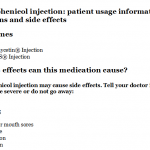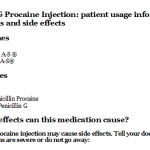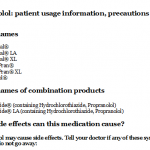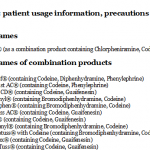
Influenza Virus Vaccine, H5N1: patient information, prescribing information, ingredients, manufacturer, adverse reactions and side effects
Sunday, April 09, 2017 by Gregory Van Dyke
http://www.naturalnewsreference.com/2017-04-09-influenza-virus-vaccine-h5n1-patient-information-prescribing-information-ingredients-manufacturer-adverse-reactions-and-side-effects.html
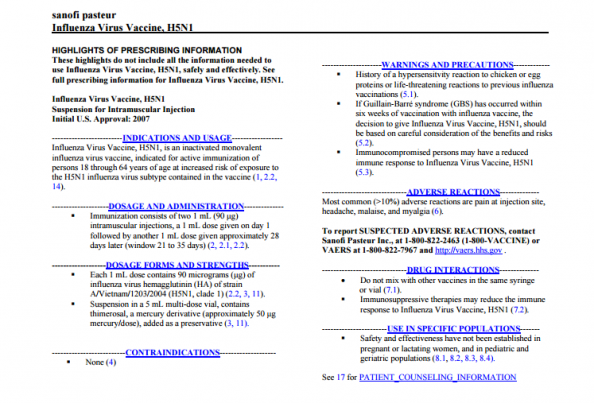
HIGHLIGHTS OF PRESCRIBING INFORMATION
These highlights do not include all the information needed to use Influenza Virus Vaccine, H5N1, safely and effectively. See full prescribing information for Influenza Virus Vaccine, H5N1.
See full insert sheet at this link at the Natural News Reference website.
Influenza Virus Vaccine, H5N1
Suspension for Intramuscular Injection
Initial U.S. Approval: 2007
INGREDIENTS AND EXCIPIENTS
Influenza Virus Vaccine, H5N1, a monovalent type A inactivated vaccine for intramuscular use, is a sterile suspension prepared from influenza virus propagated in embryonated chicken eggs and is supplied in 5 mL multi-dose vials. The virus-containing fluids are harvested and inactivated with formaldehyde. The influenza virus is concentrated and purified in a linear sucrose density gradient solution using a continuous flow centrifuge. The virus is then chemically disrupted using a nonionic surfactant, polyethylene glycol p-isooctylphenyl ether (Triton® X-100), producing a “split virus.” The split virus is then further purified by chemical means and suspended in sodium phosphate-buffered isotonic sodium chloride solution.
Influenza Virus Vaccine, H5N1, is a clear and slightly opalescent suspension formulated to contain 90 µg hemagglutinin (HA) per 1.0 mL dose of the influenza virus strain A/Vietnam/1203/2004 (H5N1, clade 1). Porcine gelatin (500 μg/dose) is added as a stabilizer. Thimerosal, a mercury derivative, is added as a preservative. Each 1.0 mL dose is formulated to contain not more than 98.2 µg thimerosal (approximately 50 µg mercury/dose). Each dose may also contain residual amounts of formaldehyde (not more than 200 μg), Polyethylene Glycol pIsooctylphenyl Ether (not more than 0.05%), and sucrose (not more than 2.0%).
No antibiotics are used in the manufacture of this vaccine. This presentation is latex-free.
Influenza Virus Vaccine, H5N1, is available as a suspension in 5 mL multi-dose vials containing 5 doses and should be administered as a 1 mL dose by intramuscular injection. [see DOSAGE AND ADMINISTRATION (2) and DOSAGE FORMS AND STRENGTHS (3)]
INDICATIONS AND USAGE
Influenza Virus Vaccine, H5N1, is an inactivated monovalent influenza virus vaccine, indicated for active immunization of persons 18 through 64 years of age at increased risk of exposure to the H5N1 influenza virus subtype contained in the vaccine (1, 2.2, 14).
DOSAGE AND ADMINISTRATION
Immunization consists of two 1 mL (90 μg) intramuscular injections, a 1 mL dose given on day 1 followed by another 1 mL dose given approximately 28 days later (window 21 to 35 days) (2, 2.1, 2.2).
DOSAGE FORMS AND STRENGTHS
Each 1 mL dose contains 90 micrograms (μg) of influenza virus hemagglutinin (HA) of strain A/Vietnam/1203/2004 (H5N1, clade 1) (2.2, 3, 11).
Suspension in a 5 mL multi-dose vial, contains thimerosal, a mercury derivative (approximately 50 μg mercury/dose), added as a preservative (3, 11).
CONTRAINDICATIONS
None
WARNINGS AND PRECAUTIONS
History of a hypersensitvity reaction to chicken or egg proteins or life-threatening reactions to previous influenza vaccinations (5.1)
If Guillain-Barré syndrome (GBS) has occurred within six weeks of vaccination with influenza vaccine, the decision to give Influenza Virus Vaccine, H5N1, should be based on careful consideration of the benefits and risks (5.2)
Immunocompromised persons may have a reduced immune response to Influenza Virus Vaccine, H5N1 (5.3).
ADVERSE REACTIONS
Most common (>10%) adverse reactions are pain at injection site, headache, malaise, and myalgia (6).
To report SUSPECTED ADVERSE REACTIONS, contact Sanofi Pasteur Inc., at 1-800-822-2463 (1-800-VACCINE) or VAERS at 1-800-822-7967 and http://vaers.hhs.gov .
DRUG INTERACTIONS
Do not mix with other vaccines in the same syringe or vial (7.1).
Immunosuppressive therapies may reduce the immune response to Influenza Virus Vaccine, H5N1 (7.2).
USE IN SPECIFIC POPULATIONS
Pregnancy
PREGNANCY CATEGORY C:Animal reproductive studies have not been conducted with Influenza Virus Vaccine, H5N1. It is not known whether Influenza Virus Vaccine, H5N1, can cause fetal harm when administered to a pregnant woman or can affect reproduction capacity. Influenza Virus Vaccine, H5N1, should be given to a pregnant woman only if clearly needed.
Nursing Mothers
It is not known whether Influenza Virus Vaccine, H5N1, is excreted in human milk. Because many drugs are excreted in human milk, caution should be exercised when Influenza Virus Vaccine, H5N1, is administered to a nursing mother.
Pediatric Use
No data are available for the pediatric population (ages less than 18 years). Safety and effectiveness of Influenza Virus Vaccine, H5N1, in pediatric populations have not been established.
Geriatric Use
Clinical studies of Influenza Virus Vaccine, H5N1, did not include subjects 65 years of age and older to determine whether they respond differently from younger subjects. Other reported clinical experience has identified differences in immune response between the elderly and younger patients to inactivated influenza vaccines.
Safety and effectiveness have not been established in pregnant or lactating women, and in pediatric and geriatric populations (8.1, 8.2, 8.3, 8.4).
Revised:
https://www.fda.gov/downloads/BiologicsBloodVaccines/Vaccines/ApprovedProducts/UCM112836.pdf
http://naturalnewsreference.com/vaccine-insert-sheets/Influenza-Virus-Vaccine-H5N1.pdf
Tagged Under: Tags: dosage, H5N1, Influenza Virus Vaccine, ingredients, insert sheet, side effects, usage, warnings

